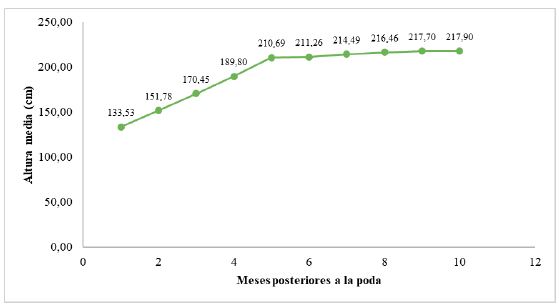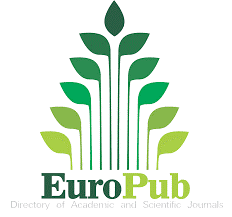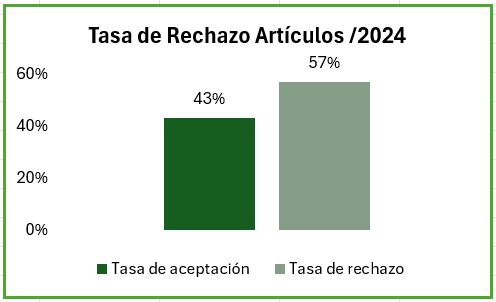Effects of Pruning on the Agronomic Performance of Jatropha curcas L. (Euphorbiaceae) at the Andil Experimental Farm
DOI:
https://doi.org/10.54753/blc.v15i1.2321Keywords:
Morphological characteristics, growth, hybrids, genotypes.Abstract
This study assessed the effects of pruning on the agronomic performance of Jatropha curcas L., conducted at the Andil Experimental Farm, Universidad Estatal del Sur de Manabí. The objective was to analyze the impact of pruning on various agronomic variables of the plant. A total of 192 plants were monitored over a period of 20 months, including 10 months before and 10 months after pruning. The hybrid JAT 001100 exhibited significant growth in height, increasing from 133,53 cm to 210,69 cm in the first five months after pruning, stabilizing at 217,90 cm by the tenth month. In contrast, the hybrid JAT 001103 showed notable variations in stem diameter during the first three months, with stability thereafter and a renewed increase at the end of the study, indicating its ability to support fruit production more effectively. The Promisorio CP 041 genotype excelled in inflorescence production, with a marked increase until the fourth month after pruning, followed by a gradual decline. The hybrid JAT 001165 showed stability in the number of branches, with minor fluctuations and a slight decrease at the end of the study, suggesting a stable architecture. Pruning proved to be an effective tool for stimulating growth and development in Jatropha curcas, particularly in the initial months. Genotypes such as JAT 001100 and Promisorio CP 041 show high yield potential under appropriate management and pruning conditions.References
Araiza-Lizarde, F., Hernández-Sandoval, J. A., & Pérez-Ramos, A. M. (2016). Relación entre altura y diámetro de árboles en plantaciones forestales. Foresta Veracruzana, 18(1), 22-29. https://www.redalyc.org/articulo.oa?id=62146619007
Borah, N., Mapelli, S., Pecchia, P., Mudoi, K. D., Chaliha, B., Gogoi, A., & Saikia, S. P. (2018). Variabilidad del crecimiento y características del aceite de Jatropha curcas L. en el noreste de la India. Biocombustibles. https://www.tandfonline.com/doi/full/10.1080/17597269.2018.1472979
Campuzano-Duque, L. F., Gualdrón-Acosta, R., y Chávez-Oliveros, L. F. (2020). Productive performance and adaptation of Jatropha curcas L. In three ecoregions in Colombia. Agronomia Mesoamericana, 31(2), 277–290. https://doi.org/10.15517/am.v31i2.39213
Cecilio, C., Canul, G., Várguez, A., y López, G. (2018). El cultivo de Jatropha curcas L. en el Sureste de México. https://ciatej.mx/files/divulgacion/divulgacion_5c9d0ab8ec961.pdf
Echeverría, R. G., Valles, A. K., Pezo, A., y Cueva, A. D. (2015). Efecto de número de podas en el cultivo de piñón (Jatropha curcas L.), en el distrito de Juan Guerra-San Martín. Instituto Nacional de Investigación Agraria (INIA). https://repositorio.inia.gob.pe/handle/20.500.12955/877
Fallot, A., y Palacios, D. (2014). Por qué se invierte en plantaciones de Jatropha. Revista Científica Multidisciplinaria, 1, 1–19. https://www.researchgate.net/publication/274275000
Ferreira, O. J. M., Holanda, F. S. R., Pedrotti, A., Vidal Santos, L. D., & Silva-Mann, R. (2022). El sistema radicular de la jatropha curcas proporciona resistencia y fortaleza al suelo. Comunicaciones en ciencia del suelo y análisis de plantas, 53(22), 2955-2967. https://www.researchgate.net/publication/235420626
Góngora, L. A., Pérez, C. J., & Muñoz, E. (2018). Variación fenotípica de Jatropha curcas en diferentes zonas agroecológicas. Ciencias Agrícolas y Forestales, 22(1), 29-37. https://ciatej.mx/files/divulgacion/divulgacion_5c9d0ab8ec961.pdf
González, J., Suárez, J., Reyes, F., Noda, Y., Sotolongo, J., Wencomo, H. B., Navarro, M., Allonso, O., Lezcano, J. C., Soca, M., Ramírez, W. M., y Montesinos, A. (2020). Manual de la Jatropha curcas L. Experencias agronómicas cubanas e internacionales (J. González y J. Suárez (eds.)). Estación Experimental de Pastos y Forrajes Indio Hatuey. https://bioenergia.ihatuey.cu/wp-content/uploads/2020/08/Manual-de-la-Jatropha-curcas.pdf
Haaz, C. E., y Sepúlveda, G. I. (2023). Jatropha curcas: una opción para el desarrollo sostenible en el ejido cinco de febrero, Champotón, campeche, México. Perspectivas Rurales Nueva Época, 21, 1–21. http://doi.org/10.15359/prne.21-41.1
Instituto de Investigaciones Agropecuarias [INIAP] (2022). Introducción de nuevos cultivares de Jatropha curcas en Ecuador. Boletín Técnico del Instituto Nacional de Investigaciones Agropecuarias, 18, 3-10.
López, P. G., y Várguez, U. A. (2017). Jatropha curcas en México: Avances y Perspectivas de un Cultivo Bioenergético. In Mérida, México (Vol. 4, Issue 1). https://ciatej.mx/files/divulgacion/divulgacion_60d0faca914b2.pdf
Machado, R., y Brunet, J. (2014). Colecta y caracterización de procedencias de Jatropha curcas L. Pastos y Forrajes, 37(2), 145-150. http://scielo.sld.cu/pdf/pyf/v37n2/pyf03214.pdf
Mohapatra, S., & Panda, H. (2010). Evaluación del crecimiento de Jatropha curcas en ambientes marginales. Journal of Bioenergy Research, 12(4), 213-220. https://www.notulaebiologicae.ro/index.php/nsb
Neupane, D., Bhattarai, D., Ahmed, Z., Das, B., Pandey, S., Solomon, J. K., & Adhikari, P. (2021). Cultivo de Jatropha (Jatropha curcas L.) como posible materia prima para biodiesel de segunda generación. Invenciones, 6(4), 60. https://www.mdpi.com/2411-5134/6/4/60
Noda-Leyva, Y., y Martín-Martín, G. J. (2016). Resultados preliminares de la poda y de la aplicación de FitoMas-E en el rendimiento de Jatropha curcas y de cultivos asociados. Pastos y Forrajes, 39(4), 246-251. http://scielo.sld.cu/scielo.php?script=sci_abstract&pid=S0864-03942016000400002
Pérez-Vázquez, A., Valdés Rodríguez, O. A., y García Pérez, E. (Eds.). (2013). Manual de Buenas Prácticas para el Cultivo de Jatropha curcas L. Colegio de Postgraduados. http://www.iica-ecuador.org/pinon/archivos/Manual%20BP%20jatrophja%20revisado%20final.pdf
Rao, N., Sahoo, S., & Das, S. K. (2008). Assessment of growth and productivity of Jatropha curcas under different agroclimatic conditions. Biofuels and Bioenergy, 19(1), 35-47. https://www.researchgate.net/publication/225735003_Genetic_associations_variability_and_diversity_in_seed_characters_growth_reproductive_phenology_and_yield_in_Jatropha_curcas_L_accessions
Saadaoui, E., Martín, J. J., Bouazizi, R., Ben Romdhane, C., Grira, M., Abdelkabir, S., & Cervantes, E. (2015). Variabilidad fenotípica y rendimiento de semillas de Jatropha curcas L. introducida en Túnez. Acta Botánica Mexicana, (110), 119-134. https://www.scielo.org.mx/scielo.php?pid=S0187-71512015000100006&script=sci_abstract
Sosa-Segura, M., Hernández, D., & Navarro, J. L. (2012). Evaluación de factores edáficos y climáticos en el crecimiento de Jatropha curcas. Agricultura Sustentable, 23(2), 40-52. https://dialnet.unirioja.es/servlet/articulo?codigo=5117064
Zamarripa, A., y Solis, J. L. (2013). Jatropha curcas L. Alternativa bioenergética en México. Instituto Nacional de Investigaciones Forestales, Agrícolas y Pecuarias. Centro de Investigación Regional Pacífico Sur. Campo Experimental Rosario Izapa (Libro científico No. 1, Primera Edición). ISBN: 978-607-37-0108-2. https://www.researchgate.net/publication/294873398_Jatropha_curcas_L_Alternativa_Bioenergetica_en_Mexico

Published
How to Cite
Issue
Section
License
Copyright (c) 2025 Bosques Latitud Cero

This work is licensed under a Creative Commons Attribution-NonCommercial-ShareAlike 4.0 International License.
This work is published under the Creative Commons Attribution-NonCommercial-ShareAlike 4.0 International (CC BY-NC-SA 4.0) license. This means that users may copy, distribute, and adapt the content, provided that proper credit is given to the authors and the journal. Commercial use of the material is not permitted. Additionally, any derivative work must be distributed under the same license. This license ensures open access to knowledge, promoting the dissemination and reuse of published works for non-commercial purposes, respecting authorship, and ensuring the free circulation of content under fair terms.




























